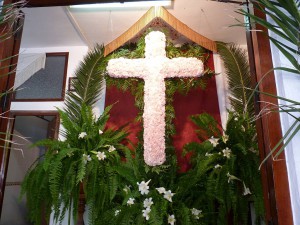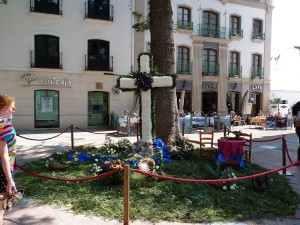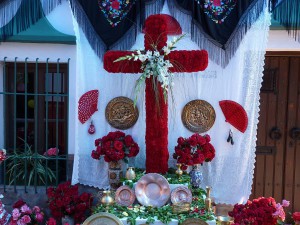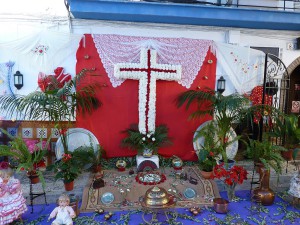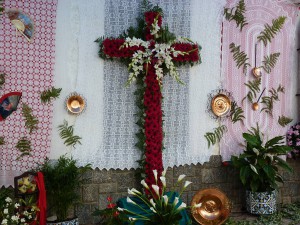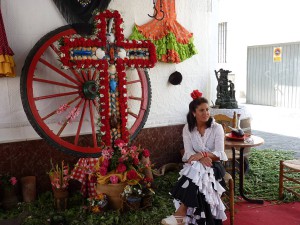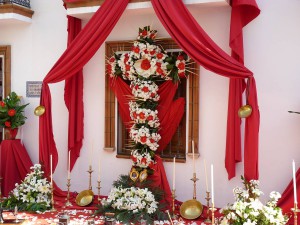 The Day of the Cross (or May Crosses – Santa Cruz – Dia de la Cruz – Fiesta de las Cruces – Cruces de Mayo – Cruz de Mayo) is celebrated throughout Spain and much of Hispanic America.
The Day of the Cross (or May Crosses – Santa Cruz – Dia de la Cruz – Fiesta de las Cruces – Cruces de Mayo – Cruz de Mayo) is celebrated throughout Spain and much of Hispanic America.
According to popular legend, Emperor Constantine I confronted overwhelming barbarians forces on the banks of the river Danube in a battle where victory was believed to be impossible. Then one night, Constantine had a vision of a cross in the sky and saw the words “In hoc signo vincis” (With this sign, you shall be victorious).
The emperor ordered a cross to be made and put it at the head of his army and, needless to say, he won an easy victory over the enemy. On returning to the city and learning the significance of the cross, Constantine was baptized as a Christian and gave orders to construct Christian churches.
He sent his mother, Saint Helena, to Jerusalem in search of the True Cross, the cross on which Jesus died and eventually, on Calvary Hill, traditionally considered the site of Jesus’s crucifixion, she found three bloody logs hidden.
To discover which was the True Cross, she placed the logs one by one over sick people and dead people who were cured or resuscitated at the touch of the True Cross. The veneration of the True Cross, and the use of pieces of the True Cross as relics, begins at this time. Hence the Day of the Cross.
There were eleven crosses registered in Nerja this year with cash prizes being awarded for the ‘best cross’ and ‘best arropia’ (cake made from flour, honey and spices).
It is not only the crosses themselves which are impressive but also the adornments and decorations around the crosses with much time and thought being spent on presentation.
More May Crosses Photos

